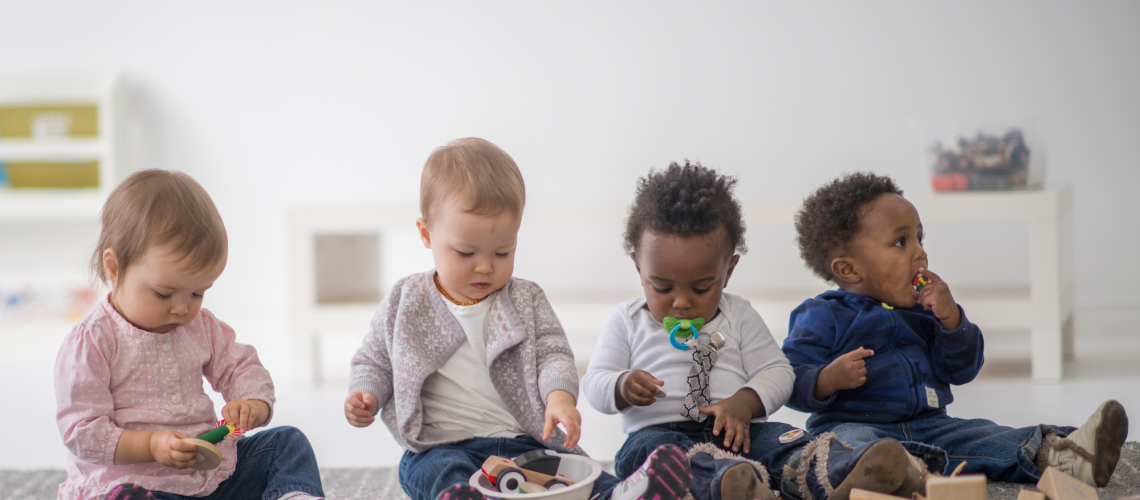By Janine Rudwick – Good Night Consultant
Many babies attend day care centers from as young as 4 months as mommies need to return back to work after maternity leave. Baby safety should always be the number one priority. An unsafe sleeping environment puts your baby at risk for suffocation, strangulation or choking.
SIDS (Sudden Unexpected Infant Death Syndrome) is categorized as a risk up to the age of 1 year old and sleep environment plays a big role in prevention.
A safe sleep environment should be enforced at home as well as at day care centers and pre-schools. There are important things for day care centers to consider when setting up their sleep routine and environment and important questions for you to ask when deciding on a day care centre for your child.
Cot Safety for infants
- Infants should always sleep in a cot
- ALWAYS place baby down on their back for sleep
- Industry regulations state that the cot rails should have slat spaces of 50 to 95mm and a base height of 600mm
- The cots should be placed at an adequate distance from each other
- The mattress should be firm and snug in the cot with a fitted sheet
- Hand me down mattresses are not advised
- Each baby should have their own individual cot labelled and used only for them
- Cot sheets should be washed weekly or when soiled to prevent the spread of germs
- There should be no loose blankets, bumpers or other loose items in the cot
- If blankets are used for babies over the age of 12 months when it is safe to do so, they need to be sent home weekly to be washed
- Cots should be used for sleeping only, do not use them for feeding, playing or changing
Toddlers
- Toddlers may nap on a toddler bed or floor mattress with supervision
- Each toddler should have their own labelled mattress or mattresses should be cleaned and sanitized before packing away after each nap
- Blankets, pillows and comfort items should be sent home weekly to be washed
The Sleep area
- Babies and toddlers should always be supervised during their naps
- A quiet and calm environment will help to promote restful sleep for all the little ones.
- A dark room with continuous white noise is very helpful
- If possible, have a separate room for sleeping away from the play and feeding area
- The sleeping space should not be too hot or too cold. Babies can easily get cold or overheat because they are unable to regulate their body temperature until they are 1.5 to 2 years of age. The ideal sleeping temperature is 20-22 degrees Celsius. A little below or above is ok, but try to keep it above 18 and below 24.
Sleep needs at different ages
- When a day care has a few infants of different ages, it is not advisable to try and let them all nap at the same time. A 4 month old baby and a 9 month old baby for example’s nap schedules will look very different. Individual schedules for infants work best. When an infant’s day schedule is not age appropriate it effects their ability to fall asleep easily, their nap quality as well as their night time sleep
| Age | Number of Naps | Total length of naptime hours |
| 3 – 6 months | 3 | 3 – 5 |
| 7 – 12 months | 2 | 2 – 3 |
| 13 – 16 months | 1 – 2 | 2 – 3 |
| 17 – 23 months | 1 | Around 2 hours |
| 2 – 5 years | 0 – 1 | 0 – 2 |
- Once little ones move over to a 1 nap schedule it is much easier to establish a set nap time for all toddlers in the class
How to set up the ideal sleep routine
- A predictable routine helps babies and young children to feel safe. Young children like knowing what comes next and the best way to do that is by being consistent with making their routines predictable
- Even with infants on different schedules you can still set it up in a way so that their day is predictable. Doing things in the same order (Change nappy- Nap- feed- play etc.)
- Follow and SLEEP-FEED-PLAY routine. Thus, always give infants their milk when waking from a nap instead of when going to sleep. This routine helps them take in a fuller milk feed and it is especially helpful in babies with reflux since they are not being put down on their back with a tummy full of milk. NEVER PUT A BABY DOWN IN THEIR COT WITH A BOTTLE. THEY CAN CHOKE ON THEIR MILK AND IT INCREASES THE RISK OF EAR INFECTIONS
- It is advised that after the age of 12 months, milk and water should be given from a sippy cup rather than a bottle
- Infants having solids should have their solid food about an hour after their milk since milk is the most important part of their nutrition until they are 12 months
Resources
https://www.startingblocks.gov.au/at-home/your-guide-to-choosing-a-safe-cot/
https://www.nichq.org/sites/default/files/resource-file/Safe%20Sleep%20FAQ_NAPPSS_FOR%20_5.21.pdf
When Can Babies Regulate Their Body Temperature?
#sleeptraining

